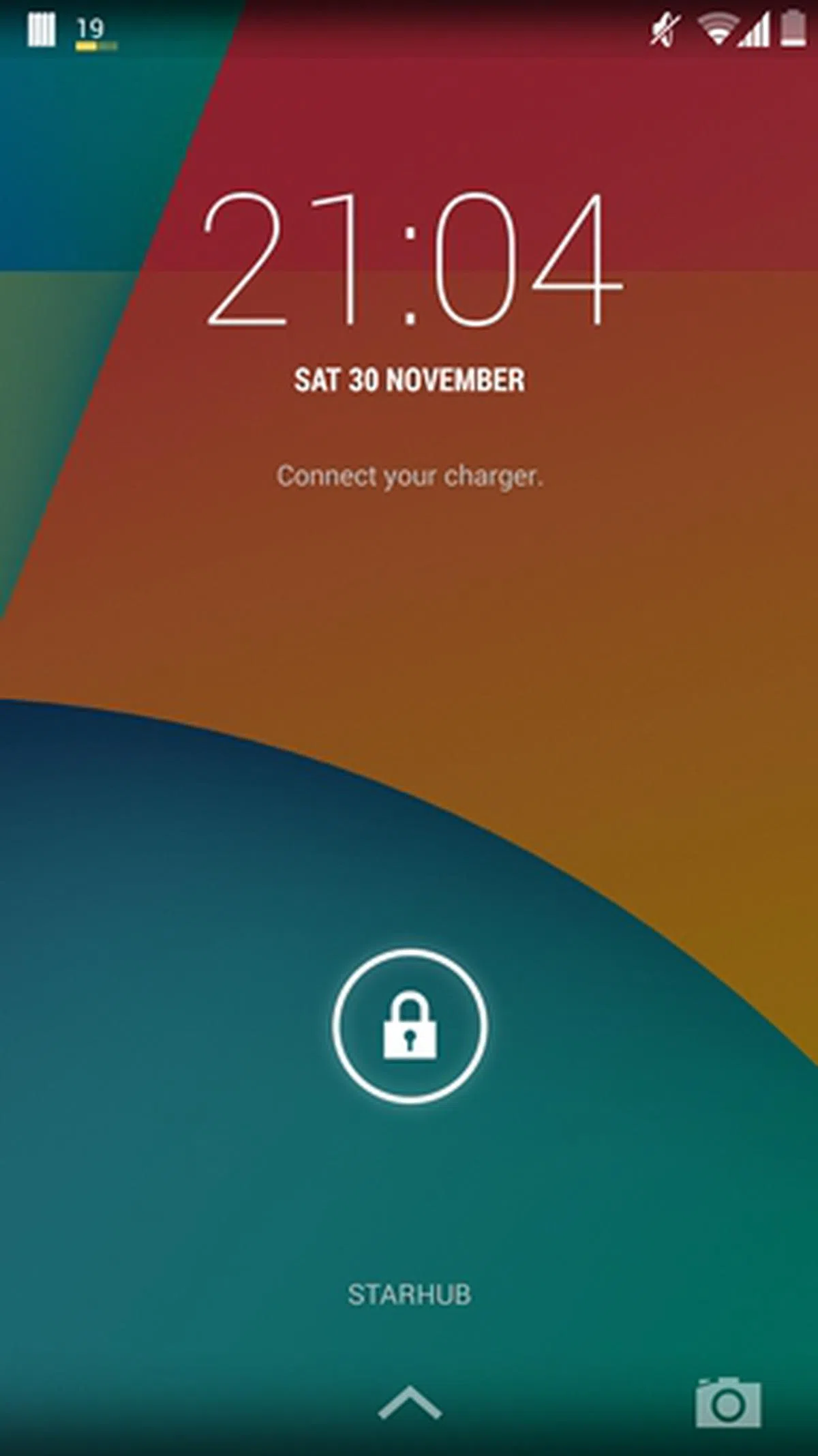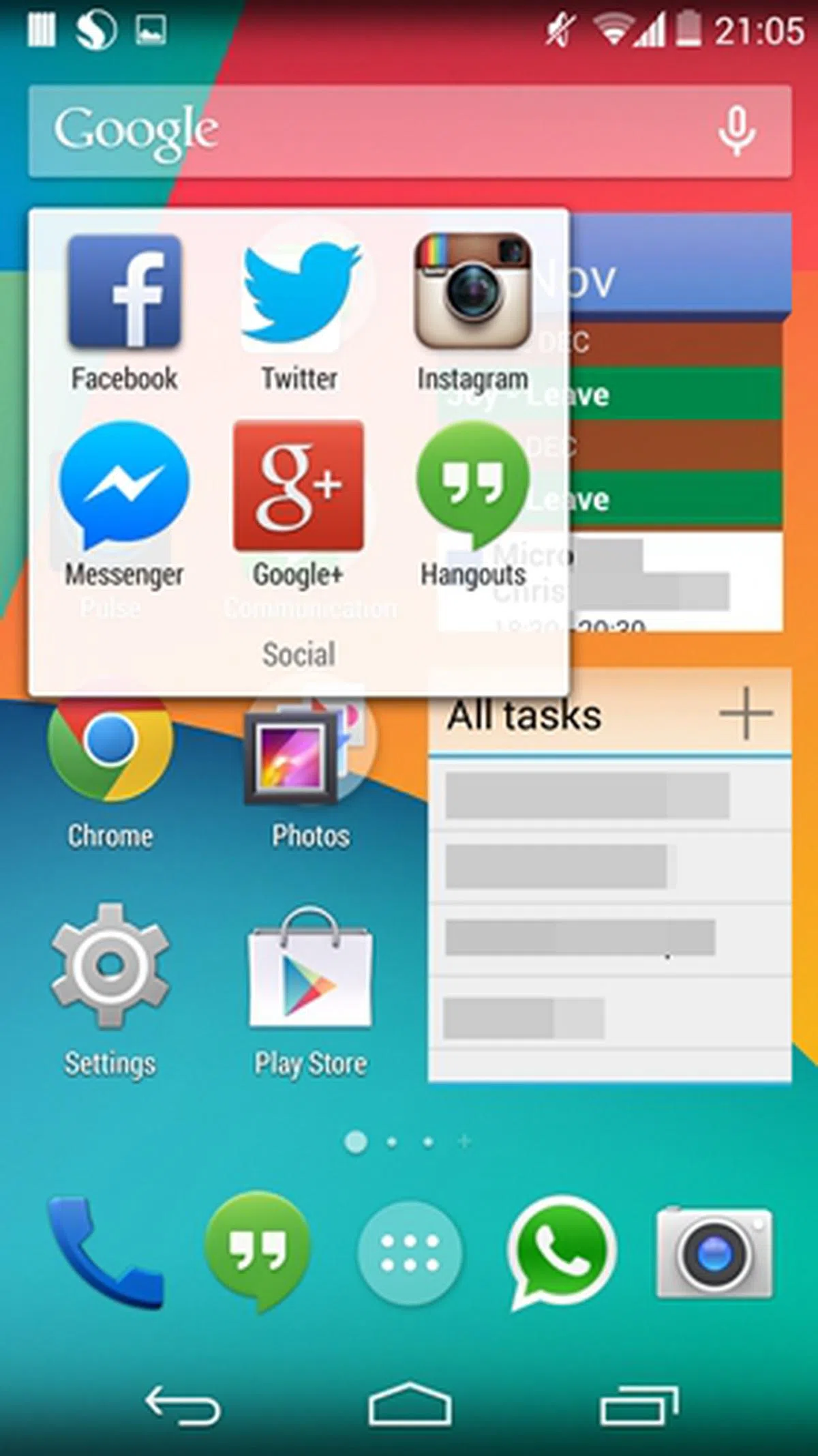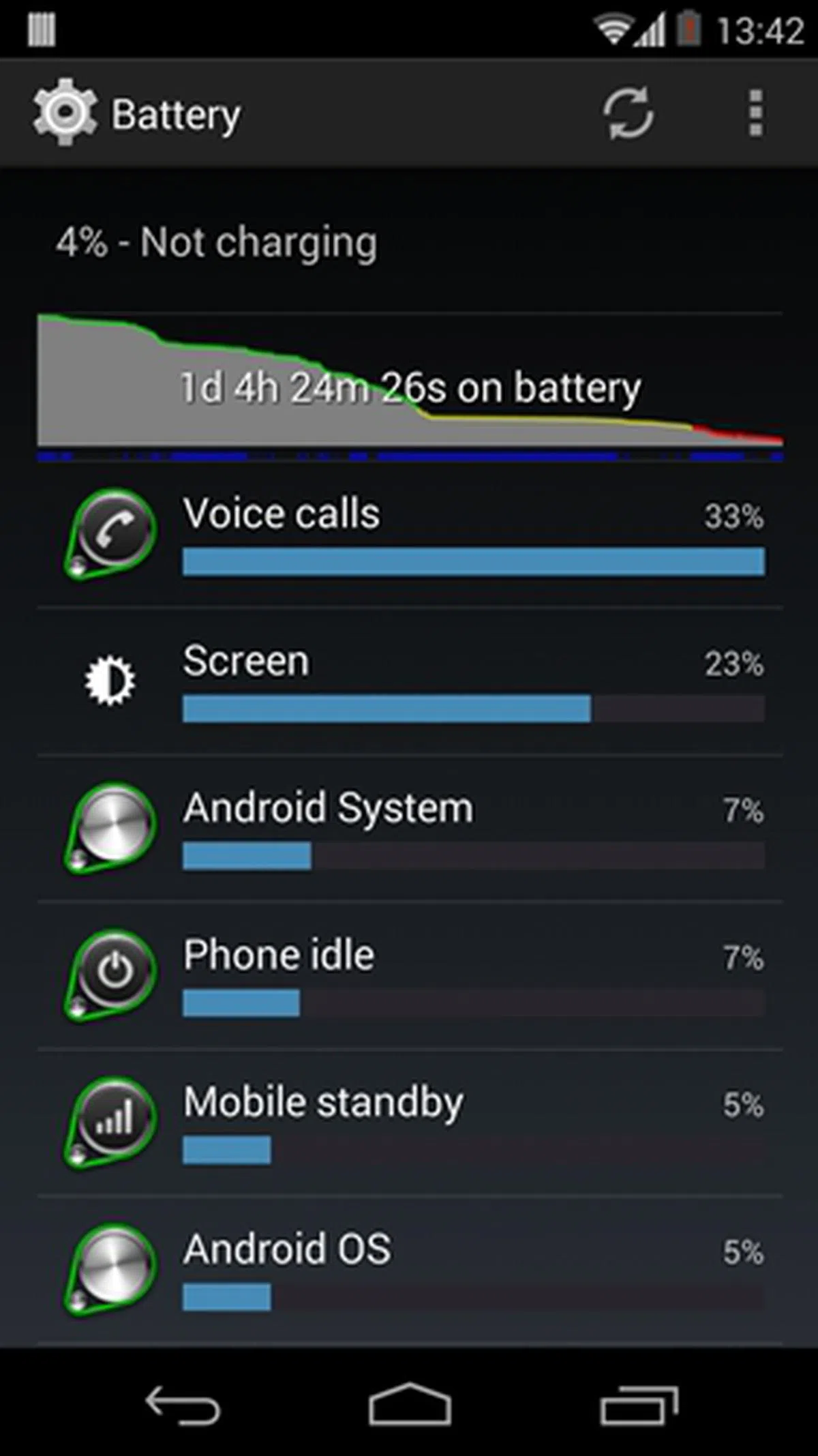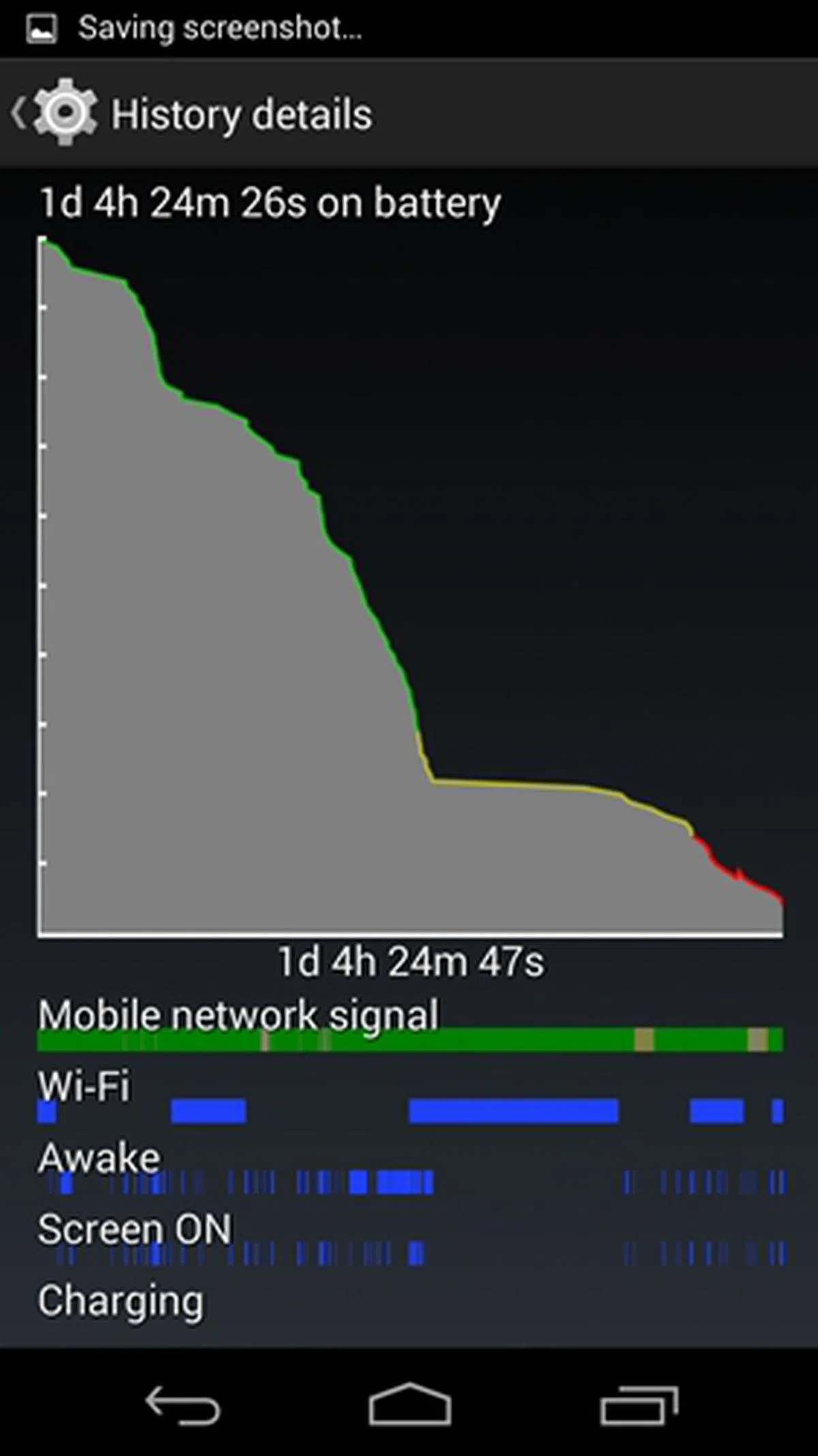LG Nexus 5 - Hi-Five
Google partners with LG for the second time to manufacture the fifth-generation Nexus smartphone, the Nexus 5. Equipped with the latest Qualcomm Snapdragon 800 quad-core 2.26GHz processor, 2GB RAM, and a 4.95-inch Full-HD IPS display, how does the Nexus 5 stack up against the other Android flagship devices? Read on to find out.
By HardwareZone Team -
Overview

The fifth generation Nexus smartphone is manufactured by LG just as its predecessor was.
While many enthusiasts eagerly awaited for the next Nexus device after the LG Nexus 4, the lead up to the debut of LG Nexus 5 was riddled with information leaks that the official announcement did not come as a surprise for many. We recap the important leaks to recount the buzz surrounding this device.
Rumors surfaced in the beginning of the year when LG was reported to be the manufacturer of the Nexus smartphone. Later in the year, there were speculation that the Nexus 5 would be based on the design of an upcoming LG phone which turned out to be true. There was even a report claiming that Motorola would be making the next Nexus smartphone.
The first concrete leak of the LG Nexus 5 appeared in September when a Google employee left his Nexus 5 prototype unattended and charging on a bar table. Photos and two short videos were shared by a staff of the bar. Subsequently, the specs of the device were leaked after Androidworld.it analyzed a log from the device.
In the weeks before its official launch, a seven-minute long video was uploaded showing the LG Nexus 5 in its full glory. Days later, the pricing of the Nexus 5 appeared on Google Play Store for a few moments.
Now that the LG Nexus 5 is official (although not yet available for sale locally), let's take a quick overview of how far the Nexus smartphone family has advanced since 2010:
Design and Feaures
The Nexus 5 may be modeled after the LG G2, but it is actually a different beast altogether. In terms of dimensions, the Nexus 5 is slightly shorter, narrower, thinner and lighter than the G2 because the latter has a bigger 5.2-inch display and larger 3,000mAh battery.
Compared to the Nexus 4, the Nexus 5 feels like a better built device. Ditching the glass rear back of its predecessor, LG throws in a soft-touch plastic back for the Nexus 5. This decision bodes well for consumers for two reasons. One, the matte finishing makes fingerprints and smudges less obvious. Second, the glass rear of the Nexus 4 picks up plenty of faint scratches,despite the fact it is uses scratch-resistant Gorilla Glass 2. We know this because some of our colleagues personally use the Nexus 4 for over a year.
If you find the edges of the buttons on the Nexus 5 to be a tad sharp or rough, it is because they are made from ceramic. Due to the material used, the buttons feel more sturdy compared to normal plastic buttons.
The Nexus 5 uses micro-SIM standard and you have to use the supplied pin to eject the SIM card tray. We tried using pins from other brands (e.g. Apple and HTC) and found them to be too large. We even tried using paper clips to eject the SIM card tray, but it failed as well. In the event you lose the supplied pin, the only alternative that worked is a small safety pin.

The camera lens is protected by a large glass casing. As the glass casing protrudes slightly, we are concerned that it will get scratched easily.
Minor Design Differences between the Black and White Nexus 5
The Nexus 5 comes in two color options, but there's more to them than just black and white. Face front, both versions appear the same because of the predominantly black finish while the selected black/white colors are only apparent at the rear of the device. Even so, there is a way to differentiate the black from the white Nexus 5 from the font via the speaker grille. The latter has a white speaker grille which really stands out from the black that surrounds it.

The color of the speaker grille follows the color of the Nexus 5 on its back.
Further to that, the rear of the black model has a similar feel to the Google Nexus 7 (2013), which feels good and provides a firm grip. On the other hand, the white model had us worried that the Nexus 5 would pick up dirt and stains easily overtime. In addition, the white model has less grip and on some occasions, slipped out of our fingers. Therefore, we recommend consumers intending to get the while model to buy a case to keep its rear clean and give it a better grip. Strangely though, the sides of the white Nexus 5 are glossy black. While such a finish is prone to getting fingerprints, smudges and even scratches, it shouldn't be much of a concern since the sides of a phone isn't something that one pays attention to.
Display
The Nexus 5 has a 4.95-inch Full-HD (1,920 x 1,080 pixels) display, which is a slight increase in size and huge bump in resolution compared to the 4.7-inch HD screen (1,280 x 720 pixels) on the Nexus 4. This gets it on-par with most Android flagship smartphones such as the Samsung Galaxy S4, ASUS PadFone Infinity, Sony Xperia Z1 and HTC Butterfly S.
We were hoping to see the ultra thin 2.65mm bezel of the LG G2 be implemented on the Nexus 5, but it seems that LG has made the technology (Dual Routing touch sensor technology) exclusive to its flagship smartphone. Nonetheless, the bezel of the Nexus 5 is still thin compared to most devices.
After some time of use, we found the display of the Nexus 5 very pleasing. The screen is very bright, has excellent contrast and vibrant colors with good color balancing.
Flagship Bearer for Android 4.4 KitKat
Google launched the latest Android version 4.4 KitKat OS on the Nexus 5. Other Nexus devices (Nexus 4, Nexus 7 and 10) should have received their respective over-the-air updates for KitKat. However, if you haven't received the update yet, it is recommended that you do not clear the Google Service Framework data to "force the update" as this method is known to cause a lot of other problems for your Nexus device. Instead, just wait till you get an update notice.
Do not be misled by the point update from Android 4.3 Jelly Bean. Android 4.4 KitKat marks a giant step forward for Google in more ways than a 0.1 figure increase. We've done an article on "The Best Features of Android 4.4 KitKat" where we explored the following:
- Cleaner, Less Distracting Design
- Integrated, Voice Activated Google Now
- Low Power Sensors
- SMS Integration into Google Hangouts
- Screen Recording via Android Debug Bridge (ADB)
- A Smarter Dialer App
- Better Productivity
- NFC Secure Element Emulation
- Project Svelte
 |  |  |
Performance Benchmarks
The Nexus 5 is powered by a Qualcomm Snapdragon 800 quad-core 2.26GHz processor and 2GB RAM, which places it in the same league as the best in the industry today.
We pit the Nexus 5 against the Nexus 4, LG G2, Apple iPhone 5S, Sony Xperia Z1 and ASUS PadFone Infinity (Late 2013) to see where it stands among the competition.
Quadrant
Quadrant evaluates a device's CPU, memory, I/O and 3D graphics performance.

History repeats itself - the Nexus 5 fared badly in the Quadrant benchmark. Its predecessor also suffered a similar fate last when we reviewed it last year. To put its scores in perspective, the Nexus 5 only performed slightly better than the HTC Butterfly and Sony Xperia ZL, which are powered by a dated Snapdragon S4 quad-core 1.5GHz processor.
One possibility is that the Quadrant benchmark is not yet optimized for Android 4.4 KitKat or that Google and LG do not bother with optimizing the Nexus 5 for better performance in this benchmark. In any case, benchmarks aren't everything as we've had a good experience using the Nexus 5 for everyday use.
3DMark (2013)
Originally developed as a PC benchmarking tool, 3DMark is now expanded to support multiple platforms including Android OS. The Ice Storm benchmark is designed for smartphones, mobile devices and ARM architecture computers.
For an in-depth understanding of 3DMark for Android, do head over to our article, "3DMark - Android Device GPU Performance Review." In a nutshell, 3DMark consists of three test sections:
3DMark Ice Storm is an OpenGL ES 2.0 benchmark test that uses fixed off-screen rendering at 720p then scales the output to fit the native display resolution of your device. Ice Storm includes two graphics tests designed to stress the GPU performance of your device and a physics test to stress its CPU performance.
3DMark Ice Storm Extreme raises the off-screen rendering resolution to 1080p and uses higher quality textures and post-processing effects to create a more demanding load for the latest smartphones and tablets.
3DMark Ice Storm Unlimited is used to make chip-to-chip comparisons of different chipsets, CPUs and GPUs, without vertical sync, display resolution scaling and other operating system factors affecting the result.
Almost all the recent flagship smartphones maxed out the scores for the Ice Storm and Ice Storm Extreme, hence we will only be looking at the scores for Ice Storm Unlimited.

The Nexus 5 is on-par with the other Snapdragon 800-touting smartphones in the Ice Storm Unlimited benchmark, which seems to suggest that there are other factors at play in the Quadrant benchmark where it did not match up to the performance of its peers.
SunSpider JavaScript
SunSpider JavaScript measures the browsing performance of a device. It not only takes into consideration the underlying hardware performance, but also assesses how optimized a particular platform is at delivering a high-speed web browsing experience. As seen in the result graph, the LG Nexus 5 has the best performance of any Android device to-date.

Synthetic benchmarks aside, the navigation and usability of the Nexus 5 is almost flawless and smooth. As with all Nexus devices, the user experience of a stock Android interface trumps other Android devices running customized interfaces or skins.
Camera Performance
The Nexus 5 is one of the few, but growing list of smartphones to sport optical image stabilization (OIS). OIS is also present in the LG G2, Nokia Lumia 1020 and HTC One. So what's the hype over OIS?
Well, the vibration caused by your hand during photo-taking can result in motion blur. OIS helps to reduce motion blur by detecting the motion of the camera and moving the lens in the opposite direction of the motion to counter the vibration, which leads to a clearer and sharper image.
Other than OIS, the Nexus 5 comes with an 8-megapixel rear camera, LED flash and a 1.3-megapixel front-facing camera. Google markets the Nexus 5 as being able to "capture the everyday and the epic in fresh new ways." With the disappointing imaging performance of its predecessor, we were curious whether the Nexus 5 would fare better.

Image quality is average at best; we've seen better quality from other devices of its class. On a positive note, the image quality is significantly better than the Nexus 4.

Here's a look at how the 8-megapixel camera of the Nexus 5 fared in normal and low light conditions. Both photos are taken in normal mode.
Click here for the full resolution images of the above shots. (1) Normal (2) Low-Light
HDR+ on Nexus 5
High Dynamic Range (HDR) is a camera feature found in most high-end smartphones today. It takes multiple photos at different exposure levels and then digitally combine them together to produce an image with a wider dynamic range.
So what's HDR+? Google calls it a smarter HDR mode which can be used to capture "vivid photos by day and sharper photos by night". Well, we put the HDR+ mode on the Nexus 5 to the test:

Left: HDR+ mode<br>
Right: Normal mode
As you can see from the two photos above, the HDR+ image delivers more saturated colors and slightly sharper images. Having said that, we recommend you to enable the HDR+ mode on the Nexus 5 at all times so that your photos will look more vibrant and the colors more punchy. For full resolution of the images, click here (1) HDR+ and (2) Normal.

Top: Normal mode. <br>
Bottom: HDR+ mode.
The two photos above are taken in a low light scene - darkened room lit only by a lamp at a corner - and the differences in image quality are noticeable. For example, the dog model looks much sharper and clearer in HDR+ mode. The numbers on the clock (to the right) are more visible too. For full resolution of the images, click here (1) HDR+ and (2) Normal.
Overall, we are pleased with the improvement in image quality on the Nexus 5 although there is room for improvement if Google wants its Nexus smartphones to compete with the likes of the Apple iPhone 5S and other Android flagship smartphones.
On several occasions, we noticed that the Nexus 5 took about two to three seconds to capture a shot. This is especially frustrating for anyone who wants to capture a particular scene at the exact moment. Remember how Google boasted about the zero shutter lag in Android 4.0 Ice Cream Sandwich? That seems to have melted away and taken a break in Android 4.4 KitKat.
Battery Performance
Our standard battery test for mobile phones has the following parameters:
- Looping a 800 x 480-pixel video with screen brightness and volume at 100%
- Wi-Fi and Bluetooth connectivity turned on
- Constant data streaming through email and Twitter


Equipped with a 2,300mAh battery (considered small for its category), the Nexus 5 naturally did not last as long as its peers. The Nexus 5 managed a battery uptime of 5 hours and 27 minutes, which is half an hour shy of the Nexus 4. Its power consumption is higher than some of its rivals such as the LG G2 (which has a slightly bigger display) and the Sony Xperia Z1. Primarily, the crux of the issue is its smaller than expected battery capacity, but that also makes the Nexus 5 a very light device compared to the competition.

In the Portability Index where each device is assessed on its ability to balance battery mileage with its size and portability, the Nexus 5 is almost on-par with the Nexus 4. Despite the light weight of the Nexus 5, its short battery life dragged its ranking down when compared to the competition. Fortunately, it's not bad, but it's just average.
But benchmarking gives only one view to this assessment. To give you a more realistic understanding on how the Nexus 5 fared under real world usage conditions, we included screenshots of the usage and history graphs which are available on Android 4.0 and later devices.
 |  |  |
As seen from the graph above, the Nexus 5 could last about 28 hours. Screen-on time is about 2 hours and 41 minutes. Some notes:
- The device logged onto a 3G network as the SIM card used does not support 4G LTE.
- The device logged onto Wi-Fi connections from time to time.
Our typical usage scenarios include making some voice calls (a total of 2 hours and 16 minutes), texting via WhatsApp, taking some photos and sharing them on social networking sites (Facebook and Instagram), the occasional web browsing via Pulse News Reader and emailing. Do note that battery mileage varies depending on your usage patterns. As for us, we feel the phone did a decent job despite its small battery capacity.
Conclusion
Can the Nexus 5 fight for the title of the best Android smartphone this year? Probably not, but we see Google making significant progress in ensuring that its Nexus smartphones can hold their own against other Android flagship smartphones.
The price, stock Android interface and receiving the latest software updates from Google remain the key selling points for any Nexus device such as the Nexus 5. This year, we see Google trying to unify a design language for its Nexus smartphone and tablet - the signature Nexus branding splattered across the back in landscape orientation is just one such example among others. It is a small step in the right direction, but more can still be done in this aspect. Nonetheless, the Nexus 5 feels well built and sturdy.
Google also ensured that the Nexus 5 is equipped with flagship worthy specs such as the Qualcomm Snapdragon 800 processor, a 5-inch Full-HD display, 2GB RAM and the inclusion of OIS for its 8-megapixel rear camera.
However, there are still areas that the Nexus 5 lagged in. It's a shame to see the Nexus 5 still trailing behind the competition in the imaging aspect after these few years. That's not to say that its image quality is bad. We appreciate features like HDR+, but we expected better of its overall imaging quality to better compete with the top tier devices from other Android vendors who've paid great attention in this area.
Battery performance of Nexus smartphones has never been remarkable or comparable to its peers, and this trend hasn't been buckled with the Nexus 5. However this time round, the problem lies with its small battery capacity. This makes the LG Nexus 5 very light for a 5-inch screen device but this directly affected its battery life performance in our benchmark test. While it's not very long lasting for continuous movie watching, it managed a decent battery up-time while using the device for the day-to-day mixed usage scenario. Last but not least, the lack of a memory card slot is still an annoying issue for Android power users who find the onboard storage insufficient for their needs.
Priced at US$349 (16GB) and $399 (32GB), the Nexus 5 is a very affordable option for consumers who are looking for the latest Android smartphone. The S$898 LG G2 is a viable alternative if one wants good camera performance, longer battery life and a bigger screen but you would have to weigh these pros against the much higher price point (although you can get it for just over S$700 in some retail outlets). Take note though, the LG G2 is priced right for a flagship phone, so it's the Nexus 5 that's tagged with a really attractive price.
Our articles may contain affiliate links. If you buy through these links, we may earn a small commission.